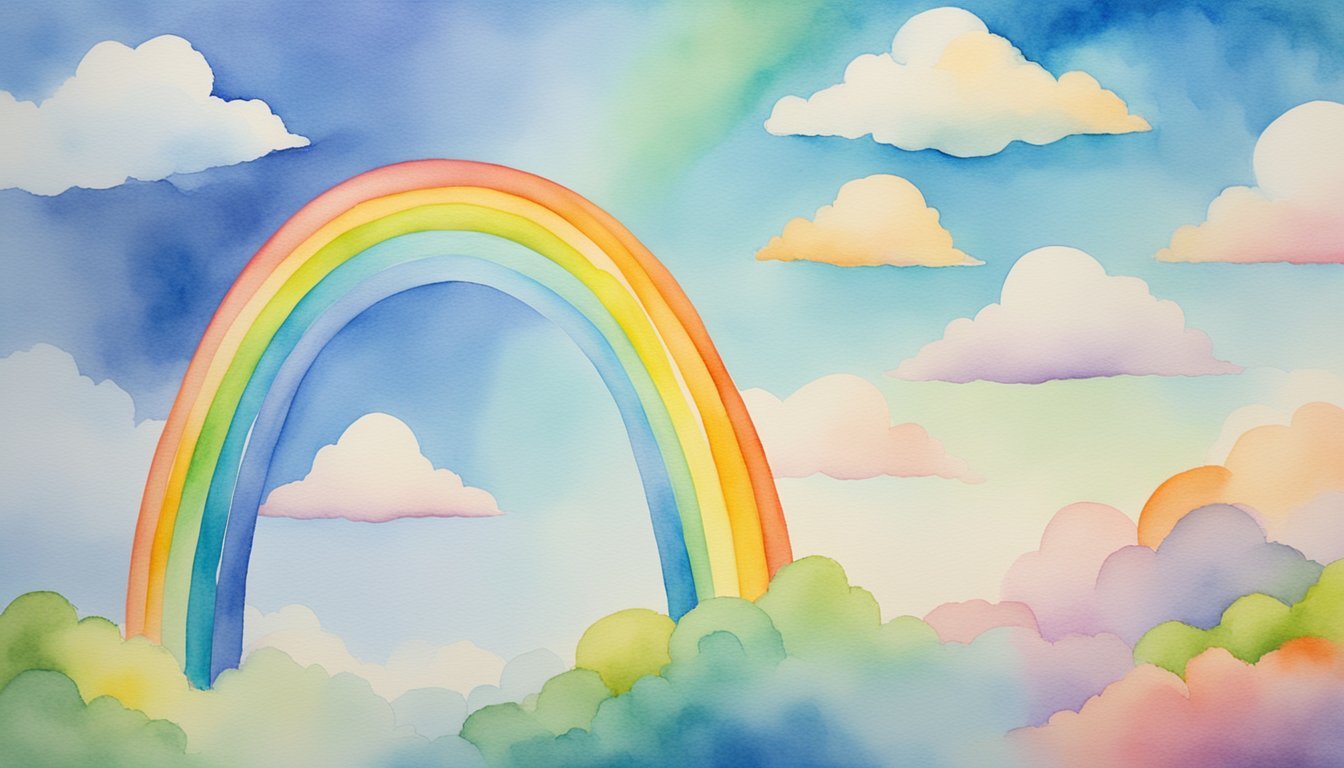Understanding Rainbows
Rainbows have long fascinated observers with their spectral display of colors arcing across the sky. The formation process and characteristics of rainbows involve a fascinating interplay of physics and atmospheric conditions.
The Science of Rainbow Formation
Rainbows are created when light encounters raindrops in the Earth’s atmosphere. As white light from the sun enters a water droplet, it is refracted, or bent, due to the change in medium. Within the droplet, light undergoes a series of reflections and refractions, separating into a spectrum of colors. Each color has a different wavelength and is refracted at a distinct angle relative to the incoming ray. These processes generate a full circle of colors with a common center—the observer’s shadow, known as the antisolar point. However, typically only an arc of this circle is visible above the Earth’s surface to a ground observer. To appreciate the full-circle nature of rainbows, one would have to view the phenomenon from an aircraft or a high vantage point.
Characteristics of Rainbows
The primary rainbow, the most commonly observed type, has an angular radius of approximately 42 degrees, with red on the outer part and violet on the inner side. When conditions are right, a secondary rainbow may appear outside the primary one, with colors reversed due to an additional reflection inside the water droplets. While rainbows are associated with rain, they can also form from other types of water drops, like mist or spray. There’s even more to the story; rainbows are part of a family of optical effects occurring in the atmosphere, which includes halos, glories, and other spectacles. The specific shape and intensity of a rainbow depend on factors such as the size of the water droplets and their concentration in the air. Though the observer perceives a solid arc, no two people see the exact same rainbow, since each person’s angle to the droplets is unique.
Visual and Cultural Aspects of Rainbows

Exploring rainbows from scientific and cultural viewpoints reveals their multifaceted nature as both a natural optical phenomenon and a symbol rich in cultural significance.
Rainbows in Different Perspectives
When light interacts with water droplets in the atmosphere, rainbows are formed, displaying a spectrum of colors from red to violet. They often appear as circular arcs to observers on the ground, but they are actually full circles. The common half-circle rainbow is simply the upper part of a circle, with the lower half blocked by the Earth’s horizon. Indeed, pilots flying high enough may witness these circular rainbows, where the full majestic sweep of the phenomenon becomes visible. The angle at which sunlight meets water droplets results in a deviation of light, creating the colorful circular arc. Each color represents different wavelengths of light, red light bending the least while violet the most.
While the primary rainbow is a common sighting, conditions may also produce a secondary bow, where light is reflected twice within water droplets, causing the colors to appear reversed. Additional faint arcs, known as supernumerary rainbows, may form inside the primary bow under certain conditions, adding to the complexity of the visual.
Rainbows in Myth and Culture
Culturally, rainbows have been a significant symbol to many civilizations. They are often seen as bridges between worlds or as harbingers of good fortune. Various mythologies attribute rainbows to divine or supernatural origins. In Greek mythology, for instance, rainbows were considered the path of the messenger goddess Iris. The Norse believed that a rainbow—called Bifröst—was a bridge to Asgard, realm of the gods. In Ireland, the folktale of a pot of gold lying at the end of a rainbow represents luck and prosperity.
Rainbows also hold significance in literature and art, frequently depicted as symbols of hope and promise. This celebrated arc has inspired countless artworks over millennia. It elicits a range of responses from observers, from awe at the sight of a serene moonbow—a nighttime rainbow caused by moonlight—to joy when a rainbow emerges from the mist of waterfalls or a garden hose’s spray, creating pockets of splendor on a sunny day. The colors of the rainbow, from red to purple, and the phenomena of lunar rainbows and double rainbows are commonly used motifs in the cultural and artistic representation of rainbows.

